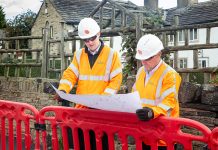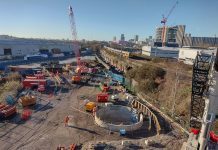By Dr Leo Carswell Principal Consultant. WRc plc
Data from on-line instrumentation is increasingly being used for process optimisation and control, monitoring critical operations and asset performance monitoring. Such instrumentation is therefore becoming fundamental for managing risk, maximising efficiency and providing the wider business with reliable information. Appropriate technology selection, installation and ongoing maintenance is therefore essential to delivering these desired outcomes.
Although the quality and reliability of instrumentation has improved significantly over recent decades so have the performance expectations within water companies. At the same time water companies have lost knowledge and experience with an aging workforce reaching retirement age. This article looks at the challenges and opportunities associated with wastewater instrumentation, drawing on the experiences of UK water companies.
Instrument selection
Wastewater instrumentation is commonly selected through large-scale procurement exercises and framework agreements. These are required due to the total value of the technology being procured over an asset management period (AMP). It is easy to criticise procurement processes for delivering standard solutions, selected primarily on price. Previous AMPs have seen many water companies using big frameworks and arguably this has not promoted innovation from either the supply chain or user. However, more innovative approaches to procurement of complex technology such as instrumentation are being adopted with new technologies solving some of the most challenging water industry problems.
Typically procurement processes do not include testing and evaluation of instrumentation. Suppliers will present claims, which are often very similar between suppliers and are not easy to challenge. In some specific areas there are product certification schemes, such as the Environment Agencies MCERTS scheme. Such schemes provide confidence that a technology meets the performance requirements but these schemes do not cover all aspects of wastewater instrumentation.
An example of where significant investment in wastewater instrumentation is planned is the use of on-line phosphorus monitors for sites with strict wastewater phosphorus consents. Selection of the most appropriate phosphorus monitoring technology is about establishing what is fit for purpose. The limitations of on-line ortho-phosphate monitors need to be balanced against the increased complexity, cost and maintenance of total phosphorus monitors.
Conversation with UK water companies involve questions such as: Are there ortho-phosphate monitors, offering lower whole life costs, which can meet the demanding accuracy requirement of very low total phosphorus consents? Alternatively are there total phosphorus monitors, which can meet the demanding accuracy requirement while offering an acceptable whole life cost? These questions demonstrate the need for robust scientific evaluation. Not least because the performance, cost of ownership and potential savings associated with the use of these different monitoring options is not fully understood.
WRc has calculated the whole life costs for different measurement technologies for ortho-phosphate and total phosphorus, these range from less than £20,000 to over £60,000 per instrument. With such a large variation a company decision on which technology to roll out could represent a difference in spend of £4,000,000 in AMP7 for 100 instruments. Such large potential savings are both very attractive but also highlight the potential issue of instrument selection based primarily on cost.
Decisions must take into consideration performance and suitability of the technology and this is best gathered through independent comparative evaluation where the performance and whole life costs are assessed and direct comparisons made.
In 2019, WRc is planning to run the largest trial of on-line phosphorus monitors seen in the UK for well over a decade. This work will fully understand and define the performance of a range of current ortho-phosphate and total phosphorus monitors for final effluent monitoring and upstream (settled/crude sewage) monitoring for dose control/optimisation. This collaborative approach will deliver benefits to both end users and suppliers.
Correct installation fundamental
The quality and performance of on-line monitoring instrumentation has improved hugely over the past two decades to the extent where poor installation is a bigger cause of problems than the sensor itself not being up to the job. The big challenge with wastewater instrument installation is that it is often undertaken not by the water company instrumentation expert or by the manufacturer or supplier, who know their instrument inside out, but by a third party contractor who may not have an appreciation of the importance correct installation has on instrument performance. Solutions to this problem have been demonstrated through good guidance, communication, training and contractor handovers, where both operational status and alignment to the company standards is reviewed and signed off.
No such thing as zero maintenance
As explained above, maintenance is closely linked to instrument selection and installation. Anyone who says that a monitoring instrument used in wastewater environment doesn’t require maintenance is completely unrealistic in what they believe or want the user to believe.
Instrument maintenance is an additional operational cost, often held within a separate budget that is commonly subject to many conflicting priorities. This, alongside a much reduced number of instrumentation technicians, presents a real challenge to the industry. Discussions around optimisation of maintenance activities, moving from fixed interval or failure-triggered maintenance, to sensor validation, self-assessment and proactive approaches are all well and good as aspirations but much of the current equipment and the system in place within UK water companies rely on frequent planned basic maintenance such as cleaning and reagent replenishment.
The industry is recognising the need for increased and different skills, and training, within the business to operate instrumentation well. Events such as the instrumentation apprentice competition, run at the Water, Wastewater and Environmental Monitoring (WWEM) conference are an example of recognising the next generation of technicians who are fundamental to how the industry adopts and embraces new technology. In the short term, outsourcing instrumentation maintenance is a solution which some have adopted for critical operations such as process control instruments and also more complex final effluent monitors, the long term use of an outsourced model is a lively topic of discussion in the industry.
The enablers to change
Addressing the points made in this article is as much about improved understanding, processes and procedures as it is about the application of new technologies. For this reason there is often a frustration from those closely involved in the application of instrumentation in the water industry that change is very difficult to achieve. A lack of understanding of the risk and cost consequences of poor instrument performance is often cited as a barrier to greater recognition and therefore funding of basic activities such as maintenance. Better demonstrating a clear return on the investment from the successful operation of technology is something that is pivotal to the industry meeting future challenges.
wrcplc.co.uk






